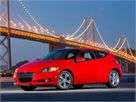Recent Articles
Popular Makes
Body Types
10 Things You Should Know About the 2011 Honda CR-Z
The CR-Z Sport Hybrid: When Decent Handling Meets Mediocre Fuel Economy
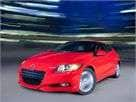
"He has his father's work ethic." "She was, unfortunately, born with her mother's nose." Like people, cars share traits with past and present family members. It's a fact evidenced by the 2011 Honda CR-Z. At its core, the CR-Z represents the blending of two memorable, two-door, two-passenger Hondas: the entertaining CRX and the uber-efficient first-generation Insight. The familial DNA chain grows longer with the CR-Z's powertrain, which unites the Fit's four-cylinder engine with Honda's Integrated Motor Assist (IMA) hybrid technology. The end result is an all-new model classified by Honda as a Sport Hybrid. It's a popular concept among enthusiasts seeking impressive handling and performance paired with excellent fuel economy. But, as we discovered during our test of the 2011 CR-Z, concept and reality are seldom one in the same. Photos courtesy of Honda
#10. CR-Z pricing starts just under $20,000
Honda starts the bidding for its 2011 CR-Z at $19,950 including a $750 destination charge. That'll get you into the base model, which isn't so basic with standard features like cruise control, automatic climate control, a 160-watt sound system, USB and auxiliary input jacks, and stylish 16-inch alloy wheels. In typical Honda fashion, the better-equipped model bears the EX name, and, in this case, is priced from $21,510. In addition to the base model's features, CR-Z EX buyers get a 360-watt audio system with a subwoofer, Bluetooth connectivity, HID headlights, and leather and aluminum interior enhancements. At the top of the heap is the 2011 Honda CR-Z with Navigation, a model that'll set you back $23,310. Each variant comes standard with a six-speed manual gearbox. A continuously variable transmission (CVT) can be swapped in for $650. CR-Z buyers can also choose from a number of accessories, including XM satellite radio service and 17-inch alloy wheels.
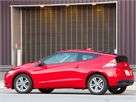
#9. The CR-Z pays homage to a cult classic
The names are similar. The silhouettes are similar. And the rear hatches' vertical glass panels are an obvious giveaway. Put it all together and you have a dead ringer for one of the modern era's cult classics, the Honda CRX. Indeed, the 2011 CR-Z is the descendent of that highly acclaimed '80s two-seater. Honda's sporty CR-Z hybrid offers enthusiast-approved proportions by today's standards, though it's several inches longer and hundreds of pounds heavier than the CRX. Up front is a nose playing host to a large grille surrounded by swept-back headlights, the flanks are accented by aggressive and upward creases that deliver a level of style the CRX could only dream of, and the tail finishes things off with LED lamps. Inside, the Honda CR-Z's bright gauge cluster and digital instrumentation appear futuristic even when compared to its modern rivals, and make its decades-old predecessor look downright archaic.
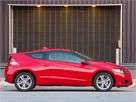
#8. CR-Z comfort is better than expected
In addition to the CRX, the 2011 Honda CR-Z also bears a resemblance to the first-generation Insight, a model that sacrificed its share of comfort in the name of fuel efficiency. With a week and potentially hundreds of testing miles ahead of us, we were seriously hoping the CR-Z didn't follow in those footsteps. As it turns out, there was nothing to worry about. We'd be lying if we suggested this little Honda was as comfy as a Pottery Barn sofa, but the experience is far from punishing. The doors are longer than those of a sedan and the seats sit low, making getting in and out of the CR-Z less than ideal, but once inside you'll find firm buckets with ample thigh support and substantial upper bolsters. Drivers will likely appreciate the tilt and telescoping steering wheel as well as the manually adjustable seat, both helping to provide a more personalized fit. However, if you're anything like us, the lack of a center armrest is an annoyance that grows increasingly bothersome as the miles accumulate.
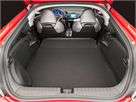
#7. Inside the CR-Z, you'll find intuitive instrumentation with a high-tech appearance
The CR-Z's interior is, in a word, cool. We're speaking specifically of the gauge cluster, with a layout that features a large tachometer surrounded by digital displays relaying information including the battery's state of charge, the amount of electrical assist that's being provided to the engine (if any), and more. In addition to that typical hybrid instrumentation are three buttons located to the left of the steering wheel, collectively representing what Honda calls a 3-Mode Drive System (Econ, Normal and Sport). Corresponding with the selected setting and the degree of throttle input, the tachometer's backlighting changes from green (most efficient) to blue to red (least efficient). Again, for us, the word cool comes to mind, but perhaps we're just easily impressed. Unlike most cars, the 2011 Honda CR-Z's climate controls are located on the right edge of the gauge cluster and not in a vertical, centered instrument panel. This is simplicity at its finest, allowing the driver to make adjustments with a single dial and a few well-marked and illuminated buttons. Our test car's radio was integrated with a navigation system that featured a handy touch screen and a lower enclosed cubby with a USB port designed for hooking up and storing your iPod.
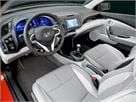
#6. Honda's newest hybrid sports 122 net horsepower
Since Honda has labeled its front-wheel-drive CR-Z a Sport Hybrid, one might expect its gas engine to be larger and more powerful than, say, the Toyota Prius's 134-horsepower, 1.8-liter four-cylinder. As it turns out, the CR-Z doesn't quite measure up in this regard with its 1.5-liter mill and a net rating of 122 ponies. Torque registers 128 lb.-ft. when the standard six-speed manual is at play, or 123 lb.-ft. if the CVT has been selected. The 2011 CR-Z's IMA hybrid system also includes an electric motor and a 101-volt nickel-metal hydride battery. Drivers can dictate how efficient the two-passenger Honda will be by selecting between Econ, Normal and Sport modes. Look beyond the hybrid powertrain and you'll find a chassis comprised of MacPherson front struts, a torsion-beam rear suspension, electric steering, disc brakes (vented front/solid rear), and either standard 16-inch or optional 17-inch alloy wheels.
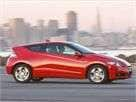
#5. CR-Z fuel economy isn't all that impressive
Weighing in between 2,637 (CR-Z with six-speed manual transmission) and 2,707 lbs. (CR-Z EX with Navigation and CVT), the 2011 Honda CR-Z is on par with the Civic Coupe, which the EPA suggests is good for 25 mpg around town and 36 mpg out on the open road. The CR-Z, by comparison, offers drivers 31 mpg in the city and 37 mpg on the highway when equipped with the standard six-speed stick, or 35 mpg city/39 mpg highway with the available CVT. Beating the traditionally powered Civic in the fuel economy race is commendable, but the CR-Z loses some of its luster when viewed amongst its peers. Though differences in curb weights are negligible, the Toyota Prius and Honda's own Insight and Civic Hybrid models prove more efficient than the CR-Z, as does the 3,720-pound Ford Fusion Hybrid. That being said, it should be noted that the CR-Z's EPA numbers reflect operation in Normal mode; consistent driving in Econ mode likely returns better results.
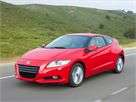
#4. The CR-Z's optimum efficiency comes at the price of optimum fun
Pair a four-cylinder hybrid with what's called an Econ mode, and you might guess that an exhilarating driving experience is not in your immediate future. When this setting is selected in the CR-Z, efficiency becomes Priority 1, meaning throttle response is limited and the air conditioning is set to maximize fuel economy. Econ is suitable for around town or when you're mired in stop-and-go traffic, but prepare for a sensation akin to driving with one foot on the gas and one constantly applying mild brake pressure. This may be the most efficient way to get the most miles per gallon out of the CR-Z, but it's also the quickest way to lose interest in actually driving the car. There's more to love, or at least like, about the default Normal setting. Throttle response remains limited, but not to the degree of Econ. Regardless of whether you roll on the throttle or hammer it to the floor, the CR-Z feels much livelier in this mid-level mode and, as a result, more enjoyable to drive. Normal was our preferred selection when using cruise control on the highway, providing the power necessary to maintain speed on inclines, something Econ had trouble accomplishing.
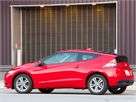
#3. Fun can be had in the 2011 CR-Z with a Sport button and slick six-speed gearbox
For shoppers who focus more on the sport side of Honda's CR-Z Sport Hybrid, the appropriately named Sport mode is the setting of choice. Throttle response is quick, and what once felt like a restrained powertrain suddenly comes to life. Despite its electric motor, the CR-Z is not exactly a torque monster, so off-the-line acceleration falls shy of mind-blowing. However, the 1.5-liter four-banger is a rev-happy little engine and the six-cog manual gearbox offers more precise and shorter throws than you'll find in any current hybrid, not to mention the majority of mainstream sporty cars.
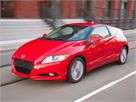
#2. Compared to other hybrids, the Honda CR-Z delivers sporty handling
It was well past midnight, the skies were clear, the roads were dry, and the streets occupied by little more than the intermittent reflections of blinking traffic lights. The well-lit on-ramp to the highway connector, with its long and gradual curve, had 'Test the CR-Z's Cornering Ability' written all over it. After traveling miles through town in Econ mode we took the bait, selected Sport mode, downshifted into second gear, and felt the chassis respond as we exercised the throttle. Unfortunately, we weren't entirely alone. In fact, we were being watched. And clocked. The CR-Z tackled that corner so well (thanks in part to a firm suspension that limited body roll and the Sport mode's tighter steering response) that we hit 71 mph upon entering the subsequent straightaway. In case you've ever wondered, people do get pulled over in hybrids. Around town, the 2011 CR-Z delivers a stiff but not abusive ride, with the suspension feeling tight and controlled when traveling over railroad tracks and rough pavement. Braking power is easily modulated and abundant, without the overly sensitive sensation that often accompanies hybrids' regenerative braking systems.
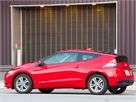
#1. The 2011 CR-Z is less efficient than other hybrids and less entertaining than other sporty cars
When evaluating the 2011 Honda CR-Z, there's one question to answer: Does it live up to the Sport Hybrid label? We vote yes, though there are a few caveats. The capable handling and fun driving character we're led to expect can only be had when the CR-Z is operated in Sport mode. Even then, the experience is entertaining by hybrid standards but short of outstanding when compared to all front-drive hatchbacks on the market. Honda is quick to point out that the CR-Z's three modes allow drivers to choose between performance and maximum efficiency, something we'd note is done in other cars by simply adjusting speed and driving style. And then there's the issue of the 2011 CR-Z being a small, four-cylinder hybrid that fails to break through the 40-mpg threshold, placing it behind models such as the relatively portly Ford Fusion Hybrid. Many shoppers will likely be surprised by that fact, and may agree that the CR-Z's level of sportiness doesn't fully compensate for less-than-expected fuel economy.
